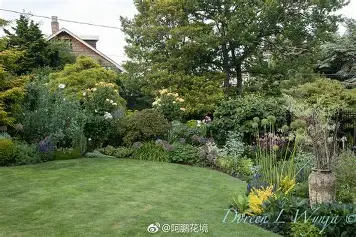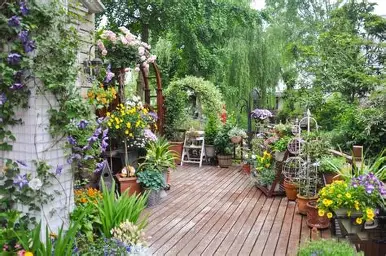Many gardeners discover the true importance of bird netting for garden only after losing a season’s harvest to hungry sparrows, pigeons, or blackbirds. The sight of ripening strawberries, blueberries, or tomatoes often attracts flocks, and without protection, the effort of planting, watering, and fertilizing can vanish overnight. This is why more and more hobbyists, small farmers, and even urban balcony growers invest in bird netting for garden. Unlike chemical sprays or noisy scare devices, netting creates a direct barrier, making it impossible for birds to reach fruits, vegetables, or seedlings.
When selecting bird netting for garden, the first aspect most gardeners notice is mesh size. A fine mesh prevents small species like sparrows from squeezing through, while larger mesh may suffice against pigeons. The typical range is from 15mm to 40mm depending on the crop and the bird species in the area. A gardener protecting grapevines will often choose smaller mesh compared to someone shielding pumpkins or cabbages. Choosing correctly ensures the bird netting for garden serves its purpose without being unnecessarily heavy.
Material quality is another defining factor. High-density polyethylene (HDPE) with UV stabilizers is widely used because it resists sun damage and weathering. Cheap plastic alternatives may seem economical but usually crack, fade, or tear within a season. Gardeners who purchase professional-grade bird netting for garden often enjoy several years of reliable use, saving money in the long run. The initial investment pays back quickly once crops remain safe and healthy year after year.
One of the advantages of bird netting for garden is its versatility. Gardeners stretch it over raised beds, drape it across trellises, or construct simple frames with bamboo poles to create enclosures. A flexible net allows easy access when watering or harvesting. Some even design hinged frames covered with netting, opening them like a lid whenever needed. Because the nets are lightweight yet strong, they can be adapted to nearly any garden structure. This adaptability makes bird netting for garden a favorite solution for both small backyard patches and larger homesteads.
Many gardeners also value the humane nature of bird netting for garden. Unlike traps, poisons, or sticky gels, netting doesn’t harm birds. It simply denies access. Birds quickly learn that fruits are unreachable and move on to other sources of food. For those who care deeply about ecology and balance in the garden, this is crucial. Protecting crops without injuring wildlife creates a sustainable gardening environment.
Appearance matters too. Some worry that bird netting for garden will spoil the look of carefully designed flower beds or vegetable rows. In reality, black or green netting blends well with foliage and becomes nearly invisible from a short distance. Transparent netting is also available, though it may not always resist UV exposure as effectively. For gardeners who take pride in aesthetics, choosing the right color helps maintain a neat and unobtrusive appearance.
Ease of installation often determines whether a gardener uses bird netting for garden effectively. A sagging or poorly secured? net may leave gaps birds exploit. Tightly stretched netting over a solid frame ensures reliability. Many gardeners find success by securing the edges of the net into the soil with ground pegs, preventing birds from slipping underneath. Others use clips, ties, or hooks to fasten the net along fences. The more stable the installation, the more effective the bird netting for garden becomes.
The benefits extend beyond fruits and vegetables. Seedlings are especially vulnerable to birds, which often pluck them from soil before they establish roots. By covering seed trays or young plants with bird netting for garden, growers prevent early destruction. Flower beds, too, gain protection from birds pecking at petals or seeds. Even fish ponds in gardens benefit when covering, stopping herons or crows from fishing. The broad scope of applications shows why so many gardeners recommend bird netting for garden as a universal solution.
Cost is another consideration. Rolls of bird netting for garden come in various lengths and widths, making them affordable for any budget. A small balcony gardener may only need a few meters, while a farm-scale grower might order hundreds of square meters. Buying in bulk usually reduces price per unit area. Considering the potential loss of produce without protection, the cost of netting is relatively minor. Many gardeners view it as essential equipment, just like watering cans or compost bins.
Durability remains one of the strongest selling points of bird netting for garden. A high-quality net can last five years or more with minimal maintenance. Occasional cleaning with a garden hose removes dust or leaves. After storms, checking for sagging or damage ensures continued effectiveness. Some gardeners even store nets indoors during off-seasons to extend their lifespan. The combination of durability, ease of care, and consistent performance makes bird netting for garden a wise investment.

Gardeners often share stories of frustration before discovering bird netting for garden. A row of ripening raspberries stripped overnight, a tray of lettuce seedlings destroyed in hours, or ornamental flowers ruined just just before blooming. After these experiences, the installation of netting feels like a relief. The difference is immediate and noticeable. Fruits ripen fully, harvest increases, and stress decreases. Many even report that gardening becomes enjoyable again once constant bird battles end.
The design of modern bird netting for garden reflects ongoing improvements. Knotless nets prevent fraying, while reinforced borders make them easier to secure. Some nets come pre-fitted with drawstrings or zippers for convenient access. These innovations aim to solve common problems faced by gardeners in the past. For example, older nets often tangled or tore easily, but newer versions focus on usability and strength.
Regional conditions also influence the choice of bird netting for garden. In sunny climates, UV resistance is vital. In windy areas, stronger mesh and firm anchoring prevent tearing. In rainy regions, lightweight but non-absorbent materials avoid sagging when wet. By selecting the right type for local conditions, gardeners ensure their netting continues to perform year after year.

Cultural practices play a role as well. In some regions, community gardens adopt shared bird netting for garden systems, covering entire plots. In urban settings, balcony gardeners attach nets to railings to prevnt pigeons from invading. In rural homesteads, netting is stretched over large fruit orchards. The adaptability of the same product to vastly different environments highlights its practicality.
Another benefit of bird netting for garden is improved cleanliness. Bird droppings not only look unpleasant but also spread diseases like salmonella. Protecting garden areas reduces contamination risks. This is particularly important for families with children who play outdoors. Keeping gardens free from constant bird intrusion contributes to a healthier and safer environment.
Some gardeners worry that bird netting for garden might restrict pollinators like bees. In practice, careful installation allows pollinators to access flowers while keeping birds aay from ripening fruits. Netting is usually applied once flowers are pollinated and fruits begin to develop. This timing ensures crops receive pollination benefits without exposure to bird damage.
Farmers and gardeners alike often combine bird netting for garden with other protective methods. Scare devices, reflective tape, or even companion planting can be used alongside nets for maximum effectiveness. However, most agree that nothing works as reliably as a physcal barrier. Birds may ignore scarecrows or sounds, but they cannot bypass well-installed bird netting for garden.
Online reviews consistently show satisfaction with bird netting for garden. Customers describe how they once lost strawberries or blueberries every year until they invested in netting. Photos often show thriving harvests protected beneath neatly installed nets. This word-of-mouth effect has spread rapidly, making netting one of the most recommended garden supplies worldwide.

The future of bird netting for garden may bring new materials such as biodegradable nets or nets with built-in pest deterrents. As demand grows, manufacturers are likely to innovate further. For now, the proven formula remains simple: strong mesh, UV protection, easy installation, and rliable coverage. Gardeners trust it because it consistently delivers results.
while gardening always involves challenges, one of the easiest to solve is bird damage. With bird netting for garden, fruits ripen fully, vegetables remain intact, flowers bloom undisturbed, and seedlings grow into strong plants. For anyone serious about protecting their hard work, but investing in bird netting for garden is not just an option but a necessity.

